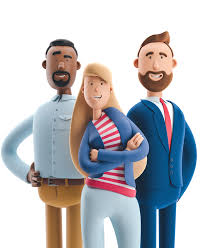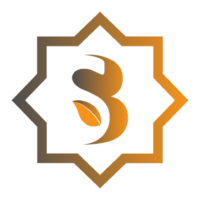3D animation has revolutionized the way stories are told in media. From blockbuster movies to simple animated videos, 3D animation allows creators to bring their imaginations to life with stunning realism and dynamic motion. Central to this creative process is the 3D animation cartoon maker—a software tool that enables animators, both amateur and professional, to create detailed and engaging animated content. This article will delve into what a 3D animation cartoon maker is, how it works, its features, pros and cons, alternatives, and ultimately provide a comprehensive overview to help you decide if it’s the right tool for your animation needs.
What is a 3D Animation Cartoon Maker?
A 3D animation cartoon maker is a software application designed to create animated graphics and videos in a three-dimensional space. Unlike traditional 2D animation, which relies on flat images, 3D animation involves creating characters, objects, and environments with depth and volume. These tools provide animators with the capability to model, texture, rig, animate, and render 3D animations, making them indispensable in various industries, including film, gaming, advertising, and education.

How Does a 3D Animation Cartoon Maker Work?
A 3D animation cartoon maker works through a series of steps, each requiring specialized tools and skills:
- Modeling: This is the process of creating the 3D geometry of characters, props, and environments. Software provides tools for sculpting and shaping models from basic shapes or from scratch using vertices, edges, and faces.
- Texturing: After modeling, the surfaces of the 3D models are detailed with textures. This involves applying images or patterns to give the models color, detail, and realism.
- Rigging: Rigging involves creating a skeleton for the 3D models so that they can be moved and posed. This skeleton consists of bones and joints, which allow the model to be animated.
- Animation: Animators then bring the rigged models to life by defining their movements. This can be done manually (keyframe animation) or through motion capture, where real-world movements are captured and applied to the models.
- Lighting: Proper lighting is crucial for setting the mood and realism of a scene. Animators use various lighting techniques to illuminate the scene appropriately.
- Rendering: This is the final step, where the software processes all the elements—models, textures, animations, and lights—into a final image or sequence of images. Rendering can be time-consuming, depending on the complexity of the scene and the quality settings.
Features of 3D Animation Cartoon Maker
3D animation cartoon makers come with a plethora of features that enable the creation of sophisticated animations. Here’s a detailed look at the common features:
1. Modeling Tools
- Primitive Shapes: Basic building blocks like cubes, spheres, and cylinders.
- Sculpting: Advanced tools for fine detailing.
- Boolean Operations: Combining or subtracting shapes to create complex models.
2. Texturing and Shading
- UV Mapping: Unwrapping the model to apply 2D textures.
- Material Editor: Creating and tweaking materials to achieve desired visual properties.
- Bump and Normal Maps: Adding surface detail without increasing model complexity.
3. Rigging and Skinning
- Bone Structure Creation: Setting up a skeleton inside the model.
- Weight Painting: Defining how the mesh deforms with the bones.
- Inverse Kinematics: Simplifying complex motions and interactions.
4. Animation Tools
- Keyframe Animation: Setting specific points in time for movements.
- Motion Capture: Using real-life movements to drive animations.
- Particle Systems: Simulating effects like fire, smoke, and explosions.
5. Physics and Dynamics
- Rigid Body Dynamics: Simulating solid objects.
- Soft Body Dynamics: Simulating deformable objects like cloth and jelly.
- Fluid Dynamics: Creating realistic water and liquid effects.
6. Lighting and Rendering
- Global Illumination: Simulating real-world lighting.
- Ray Tracing: Advanced rendering technique for realistic shadows and reflections.
- Render Farm Support: Utilizing multiple computers to speed up rendering.
7. Post-Production Tools
- Compositing: Combining different elements into a final image.
- Color Grading: Adjusting the color and tone of the final animation.
- Special Effects: Adding visual effects like glows and flares.
8. User Interface and Workflow
- Customizable Interface: Tailoring the workspace to fit personal preferences.
- Script and Plugin Support: Extending the functionality through custom scripts and plugins.
- Collaboration Tools: Features that support team collaboration, like version control and cloud syncing.
Pros of 3D Animation Cartoon Maker
| Pros | Description |
|---|---|
| High Quality and Realism | Produces highly realistic and detailed animations. |
| Versatile | Can be used across various industries like film, games, education, and advertising. |
| Creative Freedom | Allows for unlimited creativity in designing and animating characters and scenes. |
| Engaging Content | Creates engaging and immersive content that captivates audiences. |
| Reusability | Models and animations can be reused and repurposed, saving time in future projects. |
| Scalability | Suitable for both small projects and large-scale productions. |
Cons of 3D Animation Cartoon Maker
| Cons | Description |
|---|---|
| High Learning Curve | Requires significant time and effort to master the software. |
| Resource Intensive | Demands powerful hardware and can be very resource-heavy. |
| Time-Consuming | The process, especially rendering, can be very time-consuming. |
| Expensive | Professional-grade software can be costly. |
| Complexity | Managing and animating highly detailed models can be complex and challenging. |
| Maintenance | Keeping software and hardware up-to-date can be a hassle and an additional cost. |
3D Animation Cartoon Maker Alternatives
| Alternative | Features | Pros | Cons |
|---|---|---|---|
| Blender | Open-source, comprehensive tools for modeling, texturing, rigging, animation, and rendering. | Free, robust community, frequent updates. | Steep learning curve, can be resource-intensive. |
| Maya | Industry-standard with advanced features for modeling, animation, and rendering. | Professional-grade, extensive plugin support, high-quality output. | Expensive, complex interface, high system requirements. |
| Cinema 4D | User-friendly interface with powerful tools for modeling, texturing, and rendering. | Easier learning curve, great for motion graphics, strong integration with Adobe products. | High cost, not as powerful for character animation. |
| 3ds Max | Advanced modeling, animation, and rendering capabilities. | Highly detailed modeling tools, strong architectural visualization. | Expensive, Windows-only, high system requirements. |
| Houdini | Known for its powerful simulation tools and procedural generation. | Great for VFX, procedural modeling, highly customizable. | Complex to learn, expensive, requires powerful hardware. |
| Tinkercad | Simple, beginner-friendly 3D modeling tool. | Free, easy to use, great for beginners and education. | Limited capabilities, not suitable for complex animations. |
| Clara.io | Cloud-based 3D modeling, animation, and rendering. | No installation required, collaborative tools, accessible from any device. | Dependent on internet connection, limited advanced features. |
Conclusion and Verdict on 3D Animation Cartoon Maker
3D animation cartoon makers are powerful tools that provide the capabilities needed to create stunning animated content. Whether you are a professional animator working on a blockbuster movie or an amateur creating a short animation for a YouTube channel, these tools offer a wide range of features to support your creative endeavors. The choice of software will depend on your specific needs, budget, and skill level.
Professional-grade software like Maya and Blender offers comprehensive tools and high-quality output but comes with a steep learning curve and significant resource demands. More user-friendly options like Cinema 4D provide a balance between functionality and ease of use, while free and accessible alternatives like Tinkercad and Clara.io cater to beginners and those needing less advanced features.
Ultimately, the right 3D animation cartoon maker will enable you to bring your creative visions to life, making it an invaluable asset in the animation toolkit. The key is to evaluate the features, pros, and cons, and choose the one that aligns best with your project requirements and workflow preferences.
FAQs on 3D Animation Cartoon Maker
1. What is the best 3D animation cartoon maker for beginners?
- Answer: Tinkercad and Blender are great for beginners. Tinkercad is very user-friendly and ideal for simple projects, while Blender, though more complex, offers comprehensive tutorials and a supportive community.
2. How much does professional 3D animation software cost?
- Answer: Prices vary significantly. Software like Blender is free, whereas Maya and 3ds Max can cost upwards of $1,700 per year. Cinema 4D also falls in the higher price range, typically costing around $1,000 annually.
3. Can 3D animation be self-taught?
- Answer: Yes, many successful animators are self-taught. There are numerous online resources, tutorials, and communities that provide support and learning materials for aspiring animators.
4. What hardware is needed for 3D animation?
- Answer: A powerful computer with a high-end GPU, ample RAM (16GB or more), and a fast CPU is recommended. A dual-monitor setup can also enhance productivity.
5. Is 3D animation only used in movies and games?
- Answer: No, 3D animation is also used in advertising, education, architecture, virtual reality, medical visualization, and more.
6. How long does it take to create a 3D animation?
- Answer: It varies based on the complexity of the project. Simple animations can take a few days, while more complex projects can take months or even years.
7. Can I use 3D animation for creating educational content?
- Answer: Absolutely. 3D animations can simplify complex concepts, making them easier to understand and more engaging for students.
8. What is rigging in 3D animation?
- Answer: Rigging is the process of creating a skeleton for a 3D model so that it can move. It involves setting up bones and joints that animators use to pose and animate the model.
9. Do I need to be good at drawing to create 3D animations?
- Answer: While drawing skills can be beneficial, they are not essential. 3D animation relies more on understanding shapes, movements, and spatial relationships.
10. What is the difference between 3D and 2D animation?
- Answer: 2D animation involves creating images in a two-dimensional space, using flat images with height and width. 3D animation involves creating models with depth, allowing for more realistic and dynamic animations.



